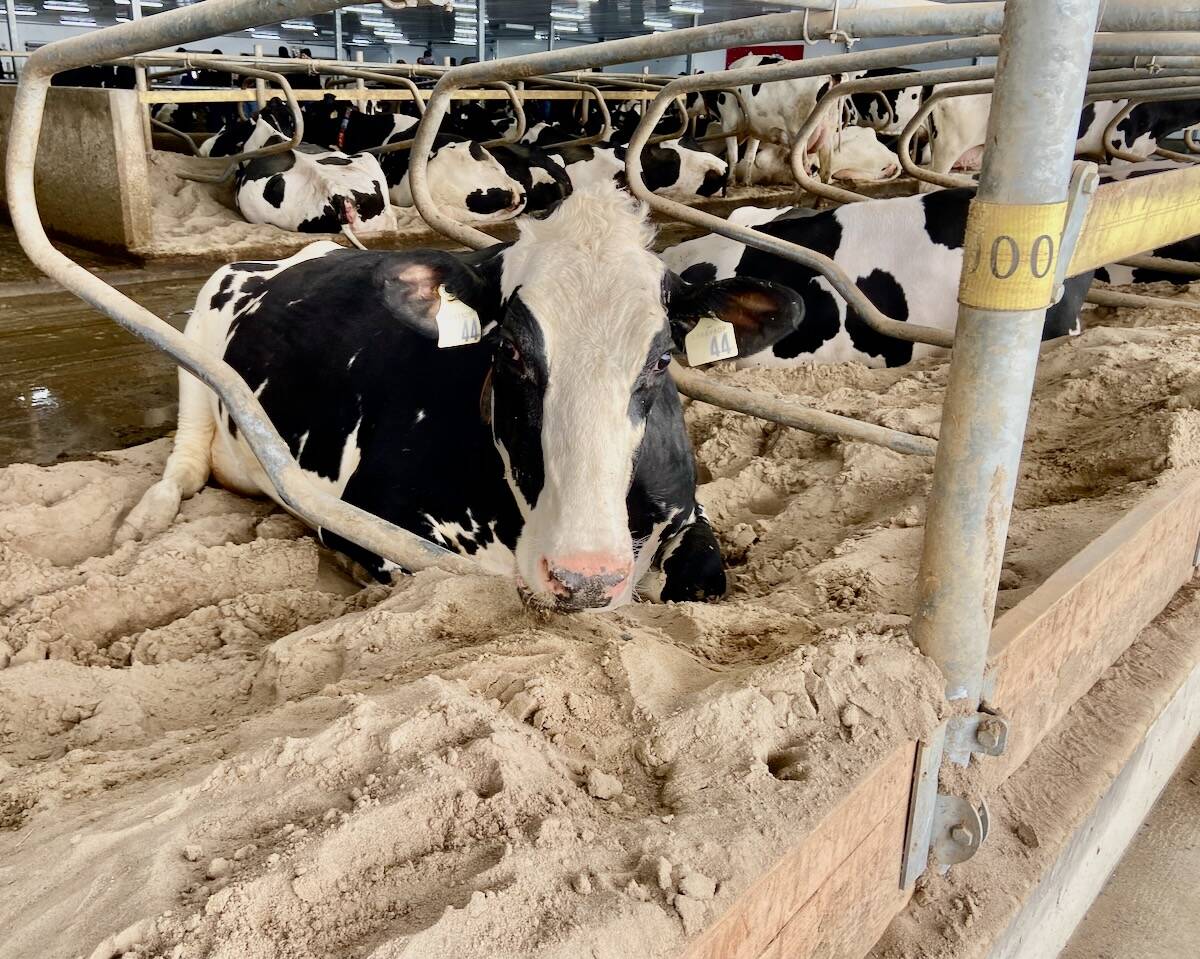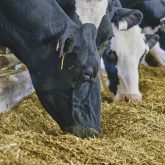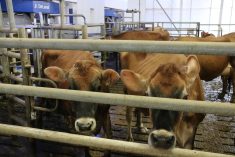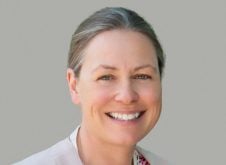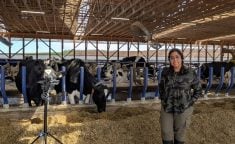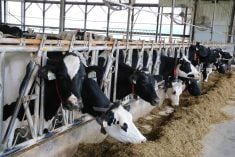Updated June 11, 2025
Steve Eicker is used to skepticism and even hostility when he encourages dairy farmers to replace their females sooner.
This was certainly the case when he gave the keynote address at the Western Canadian Dairy Seminar in Red Deer, Alta., earlier this spring.
“When I started, I think everyone in the audience had their arms folded and was scowling,” said Eicker, the co-founder of Valley Ag Software.
“But by the end…probably 65 or 70 per cent of the people went ‘oh, I need to rethink this.’”
Read Also
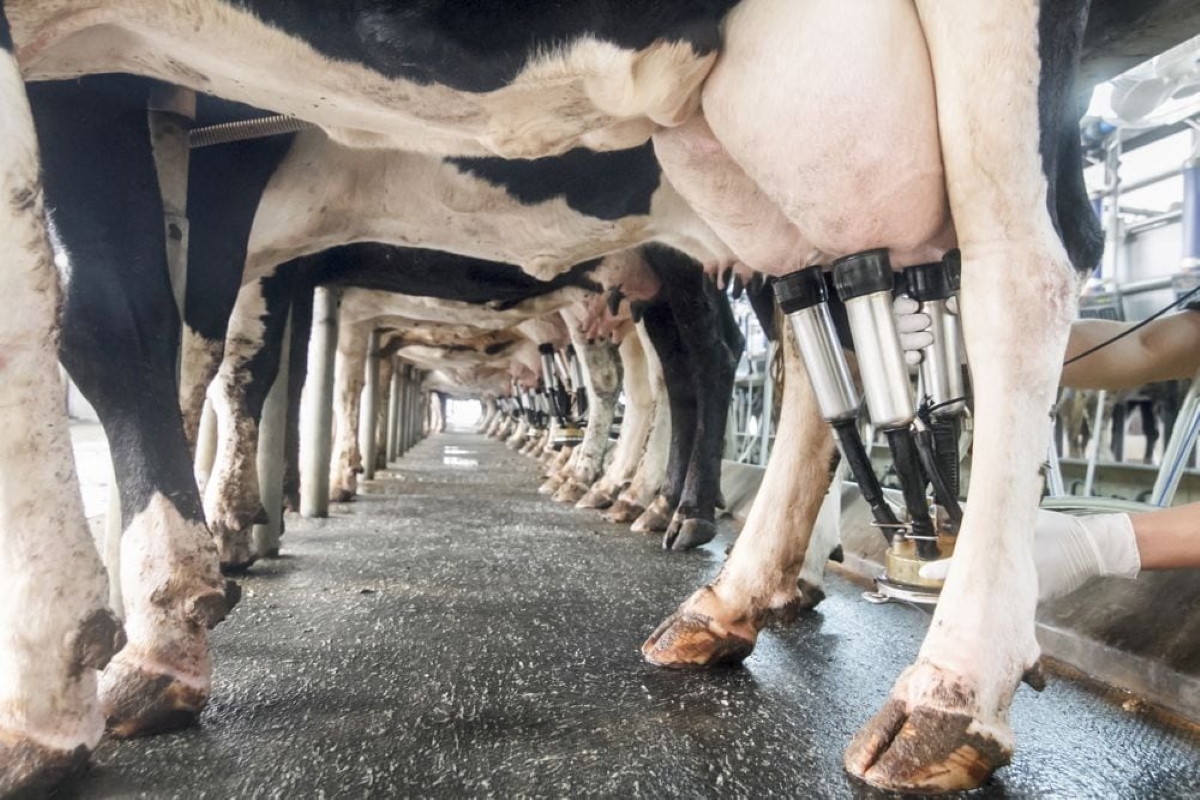
Farm gate milk price to rise in 2026
The Canadian Dairy Commission will raise its farm gate milk price by 2.3255 per cent in February, the Crown corporation announced on Friday.
It’s understandable that producers may get their hackles up when Eicker challenges the conventional thinking that older cows produce more milk, an idea he states is not true.
“There is this dogma in the dairy industry, and people never question it,” he said.
Eventually, many do come around to Eicker’s message that replacing lower-quality dairy females sooner is beneficial for animal welfare and sustainability while also decreasing the dry matter intake per unit of milk.
Doing the math
With Valley Ag Software, Eicker blended his veterinary background with his interest in computers and developed Dairy Comp 305 for dairy farm management. In the 1980s, he became interested in how many cows leave dairy operations and why they’re replaced, leading him to study how dairy herd longevity impacts farm profitability, animal welfare and sustainability.
“Being a veterinarian, I’m pretty concerned about animal welfare,” said Eicker, who added that many producers believe keeping a cow longer means they’re being better taken care of.
“I don’t care how long a cow lives; I care how well she lives. So how well is she treated?”
For most dairies, herd size is generally constant, and the cull rate is determined solely by the replacement rate. If fewer replacement heifers come into the herd, only the sick, lame and open cows can be replaced, and poorer cows end up staying in the herd longer than they should, he explained.
“The reality is how long the average cow lives in the herd has nothing to do with how well we take care of her, has nothing to do with whether she’s sick or healthy. It’s math,” he said.
“The math is not hard, but very few people think about it that way.”
Challenging misconceptions
In Eicker’s presentation, he explained that although dairy cows produce less milk as they age, the misconception that they produce more milk as they age persists.
One reason for this misconception is selection bias.
“Poor producing cows are more likely to be marketed, and higher producing cows are more likely to be retained for an additional lactation,” he wrote in a summary of his presentation.
Another reason is sub-optimal heifer growth, as undergrown heifers with a lower dry matter intake will allocate that energy towards growth rather than milk production in their first lactation.
“In a small sample of herds that weigh heifers as they freshen, smaller heifers relative to their predicted mature body weight potential had a much greater gain in milk between their first and second parity,” Eicker says.
Benefits of replacing cows earlier
Replacing dairy females sooner is better from an animal welfare standpoint, said Eicker.
“In every farm, older cows are at greater risk for diseases, especially lameness and mastitis. Replacing cows sooner will decrease disease incidence, improve animal welfare and yield more marketable beef for human consumption,” he says.
Not only that, proving to the public that the dairy industry is committed to improving welfare is better for business.
“If the public doesn’t think we’re taking good care of cows, they’re less likely to buy milk, cheese, yogurt — you name it,” he said.
Secondly, this is beneficial for the sustainability of dairy farms, and processors and retailers are becoming more interested in marketing products that use fewer resources per litres of milk.
Finally, decreasing herd longevity has positive implications for the dairy farm’s profitability.
“We want to decrease the cost of producing beef and milk. We can do that pretty easily by having more heifers enter the herd and our cows stay less time and then when they go to slaughter, they’re worth a lot more money,” said Eicker.
He noted that it’s important to remember that dairy cattle eventually enter the food chain, but cows that are marketed too late are at higher risk of being condemned.
“The dairy cows (in slaughter facilities) do not look like food. They look like a used animal that’s been thrown away, and that’s not how we should be treating (them),” he said.
“Is there any other agriculture that you want to buy the oldest animal? You want to buy the one that’s been taken care of the best, so let’s stop this myth that older cows are better. For profit, for the environment, for welfare, it’s not true.”
Updated to change the subheadline.


